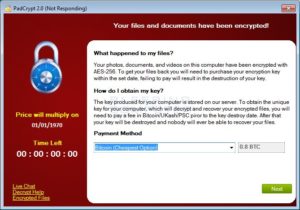
Ask yourself the following:
1. When was the last time I backed up my computer, smart phone, or tablet?
2. Do I know how to restore my data from backups?
3. What would I do if my backups were inaccessible?
What if your computer gets hit with a virus that destroys your data, or maybe even worse, becomes a victim of a ransomware attack? Ransomware is on the rise and occurs when someone clicks on a suspicious link and inadvertently installs a small program on their computer which then encrypts all their data! The only way to recover your encrypted data is by paying a ransom within a specific period, or else the ransom increases. If you don’t pay the ransom, your data will be permanently encrypted and useless to you. A friend of mine recently fell victim to a ransomware attack that encrypted 10 years’ worth of client data! She decided to pay the ransom, but still lost some of her client data. There are so many lessons here, but they all boil down to following some basic computer security rules:
1. Always use an anti-virus program – even on Apple computers. The one you choose should run continuously (called real-time scans), and do a full scan periodically (I suggest at least weekly). There are free programs that do an effective job, but I recommend using a commercial program that will also provide other security options as well like warning you of a potentially hostile web site. The commercial product we use costs under $80 a year and can be installed on an unlimited number of devices.
2. NEVER click on a link that may be suspicious. How can you tell if it’s suspicious? If it comes from a financial institution or other web site and tries to get you to log into your account, it is suspicious. To confirm the link, simply hover your cursor over the link (don’t click) and look at the URL (the long web address) and see if it looks legitimate. Pay attention to the last part (like the .com, .edu, .gov, etc). Oftentimes these malicious programs originate from foreign countries, so if the URL ends in .ru (Russia), .cn (China), .co (Columbia), .br (Brazil) or basically ANYTHING you don’t recognize, don’t click on it! Commercial antivirus programs will try to warn you before you click on a suspicious link. These PHISHING schemes are often VERY convincing, so ALWAYS be on guard for problems.
3. BACKUP, BACKUP, BACKUP! If you have your data backed up to an external USB drive, and that drive is disconnected from your computer, you can restore your data in the event of a virus or ransomware attack. This is the best and most cost-effective way to thwart disaster if you fall victim to not doing steps one and two above! The important thing is to make sure you do not keep that external drive plugged in all the time! If you do, the ransomware program will detect it and encrypt your backups as well! If you are a small business owner, you should also store your backups off-site from your office. This is a good practice for home users as well – lock your backups up in your office if possible. That way, if you have a fire or other type of disaster in your office or home, you will have backups of your data safely secured. If you use online data storage, check with them to see if they have recovery options if your data that is stored in “the cloud” is also encrypted by ransomware.
GCIS can assist you in securing your data to prepare you for the possible loss that can occur from ransomware, viruses, hardware failure, or any other type of issue. We can assist you from our office, or we can use a secure remote system to help you manage your security wherever you are! This service is designed for individual users, small offices, senior citizens – just about anyone and can be scaled to fit any budget! Contact us for details.
Closing the barn door after the horse is gone makes no sense. Keep that door closed, and if you need our expertise, let us know and we can help you!